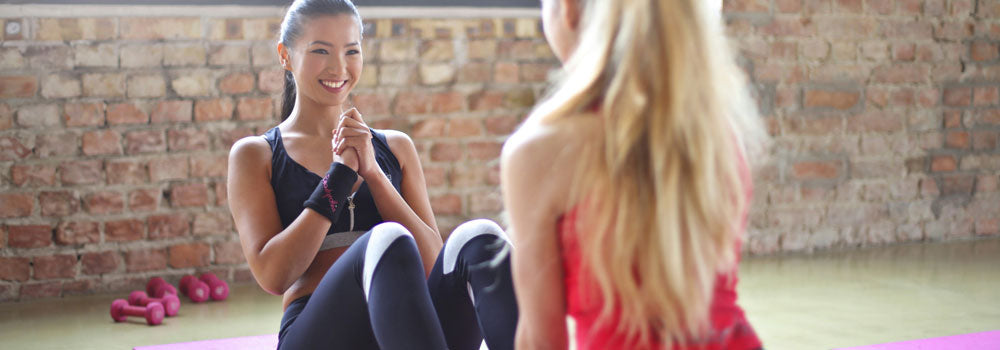Gait Training Exercises for Improved Mobility
Mar 15, 2024
A person’s “gait” describes their pattern of movements. A healthy gait can help them move naturally, comfortably and safely.
An unhealthy gait, on the other hand, may predispose you to injury and make it harder to move around independently.
Let’s discuss some of the most beneficial gait training exercises that can help you improve the way you walk. And let’s learn about the main components of a healthy gait.
Components of a Healthy Gait
What makes for a healthy gait? To understand the answer to this question, let’s break down some of the key components that combine to create your gait.
Average Walking Speed and Step Lengths
If you have ever wondered if your walking speed and step length are close to the average, you might be interested in some of the data researchers have collected.
A systematic review and meta-analysis in Sports Medicine found that the average walking speed outdoors for healthy adults was 1.31 m/s with a cadence of 116.65 steps/min.

Step lengths vary based on height, preferences, and other individual factors, but the length of your steps impacts your walking speed.
Another research study published in Diseases found that for patients ages 75 and above, a 31% step length-to-height ratio is necessary in order to walk at a speed of 1.0 m/s.
If you are unable to maintain this ratio, you may find it difficult to walk at a pace that is comfortable and effective.
Posture
A healthy walking posture starts with a healthy standing posture. Keeping your posture healthy can prevent musculoskeletal and spinal problems.
Your arms should be at your side, and your knees should be pointed in front of you, not turned at an unnatural angle. The same goes for your hips. Your back should be straight, with a smooth, natural curve in your spine. Your chin should be parallel to the ground, neither raised nor lowered.
Arm Swing
Our ability to swing our arms as we walk helps us to stabilize our gaits. A reduced arm swing is common in conditions such as Parkinson’s disease, or following a stroke.
The Importance of Gait Training
Let’s go a tad deeper into how gait training can help us stay mobile and independent.
Benefits of Gait Training Exercises
Gait training exercises can help you improve your stability and balance. In doing so, they can help you to prevent slips, trips and falls, reducing the chances of injury.
Improved Balance and Strength
Research shows that gait and balance training can help older people to improve their muscle strength and balance. This study was conducted on mudflats. Considering there were measurable improvements on that unstable ground, you can picture how much your balance could improve while walking on stable surfaces with appropriate training exercises.
Injury Prevention
If you lose your balance while walking, you might fall and get hurt. The CDC states that more than 25% of older adults fall each year. So, gait training is your opportunity to reduce a major risk factor for injury.
Top Gait Training Exercises
Now that you understand how gait training exercises can enhance your balance and strength while preventing falls and injuries, you are ready to discover some gait training exercises you can do at home.
You can do as many reps for each of these exercises as is comfortable for you. If you feel intense or unexpected pain, stop what you are doing. You can try again later if you are confident you can perform the exercise safely, or you can consult with your physical therapist. When in doubt, do not push yourself without asking for professional advice.
Calf Stretches
- Stand facing a wall.
- Place one leg forward, with the other back.
- Sink down and forward into a lunge position, pushing your hands against the wall for balance. This will stretch the calf of your back leg.
- Stand back upright. Switch your legs, and do the stretch again for your other calf.
Hip Flexor Stretches
There are a variety of stretches you can perform for the hip flexors. Here are instructions for a simple one called knee-to-chest stretches.

- Lie down flat on your back with your legs out in front of you and your arms at your sides.
- Raise one of your knees up toward the ceiling, and then pull it in toward your chest using your arms. Continue to lie flat on the floor the whole time.
- Lower your leg back down onto the floor.
- Switch sides, doing the same with your other knee.
Core Strengthening
One of the most effective core strengthening exercises you can do to improve your gait is simply to practice walking.

Be careful not to overextend yourself; walk as much as you can without unnatural pain. Try and maintain a healthy gait. When you start to fatigue, take a break, rather than allowing yourself to fall back into your old gait patterns.
Single-Leg Balance Exercises
Balancing on one leg is a great way to improve your balance.
- Stand with both feet flat on the floor.
- Carefully raise one of your legs up like a flamingo.
- Hold the stance for about 30 seconds.
- Lower your leg back down to the floor.
- Switch sides and do the same thing with your other leg.
Best Shoes for Gait Training
You will probably perform at least some gait training exercises indoors, likely barefoot. But if you are training outdoors or going on walks, you will need the right footwear.

Suitable footwear for gait training features design elements such as:
- A wide, stable base, making falls less likely.
- Sufficient depth to add an insert.
- Comfortable padding and firm support.
- A lightweight, low-fatigue design.
The Cadense Original Adaptive Shoes for men and women go a step further. Their variable friction technology helps you to “glide” smoothly and safely over uneven surfaces, even if you have a difficult time lifting your feet fully as you walk.
With their stylish design and the impressive comfort and ease they offer, many people continue to wear them long after they manage to recover a more natural gait.
FAQs
Let’s answer a few more questions you may have about gait training exercises.
How often should someone do gait training exercises to improve their balance and stability?
The exact frequency with which you should perform gait training exercises depends on your individual situation and any health conditions you may have. Talk with your doctor or physical therapist to develop a plan, or base it on your level of comfort.
Are there specific gait training exercises for combating neurological instability?
Research shows that patients with neurological conditions may benefit from rehabilitative exercises such as walking or gait training. Robot assistance may be helpful.
How can someone track progress in a gait training program?
Try and increase your observations of your own step length, speed, posture, and arm swing. A FitBit or similar device can help you track quantitative data more easily and effectively. You can also schedule regular check-ins with a physical therapist, who can provide you with additional feedback on your progress.
How long does it take to correct gait?
The length of time it takes to correct gait depends on your individual condition as well as your consistency. But it will not happen overnight. As one example, this study states that patients with Parkinson’s disease were able to improve their gait by performing 6-24 months of balance and strength training.
So, be patient and diligent, even if you do not notice dramatic improvements right away. Your efforts will be rewarded over time.

